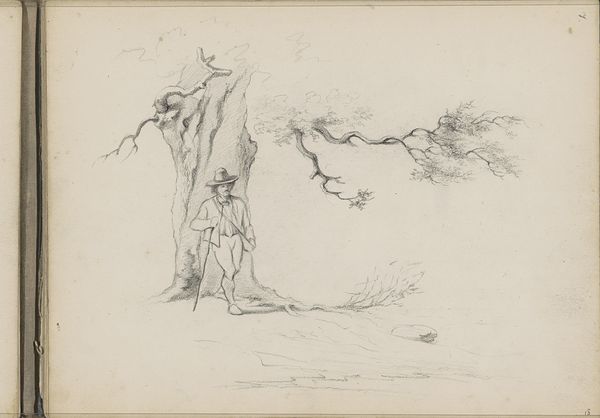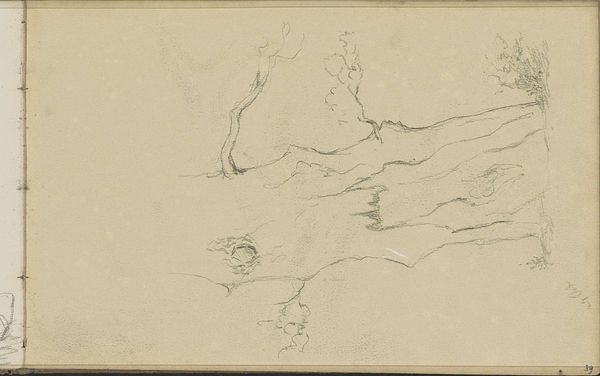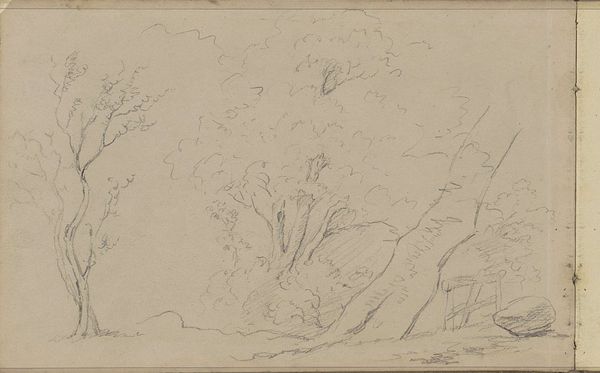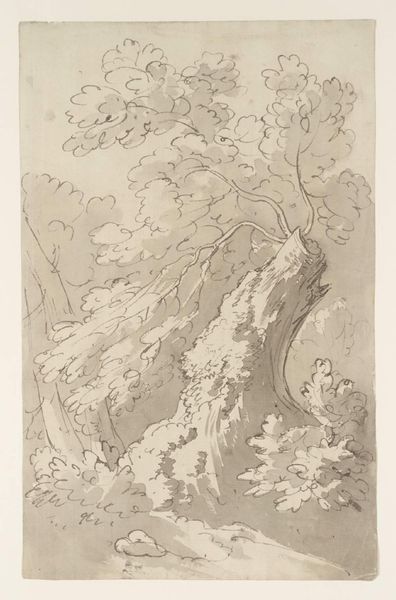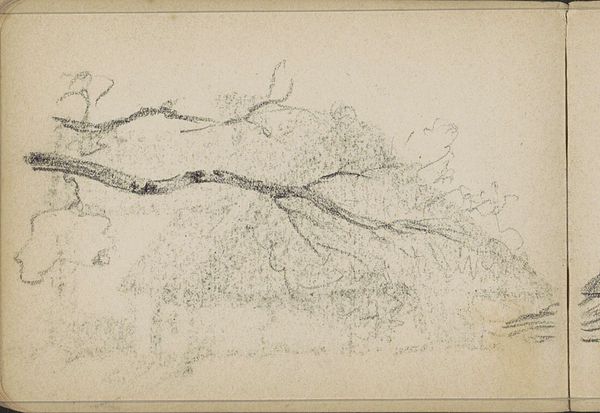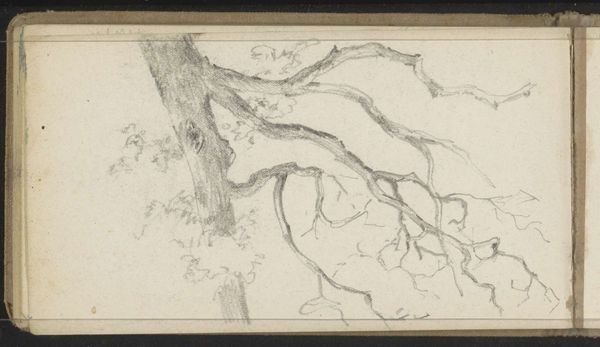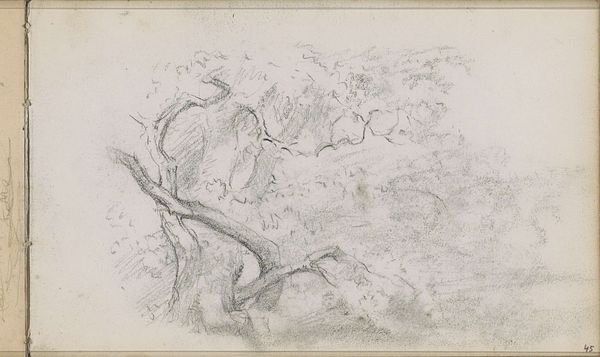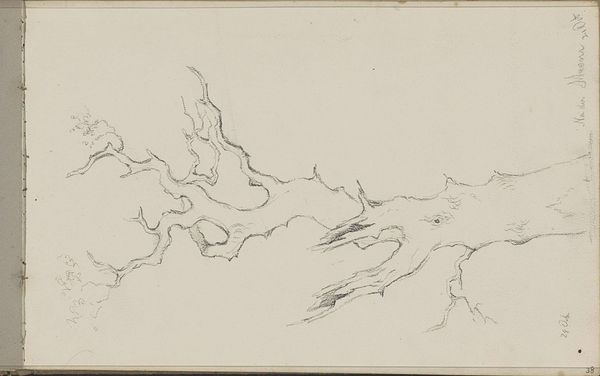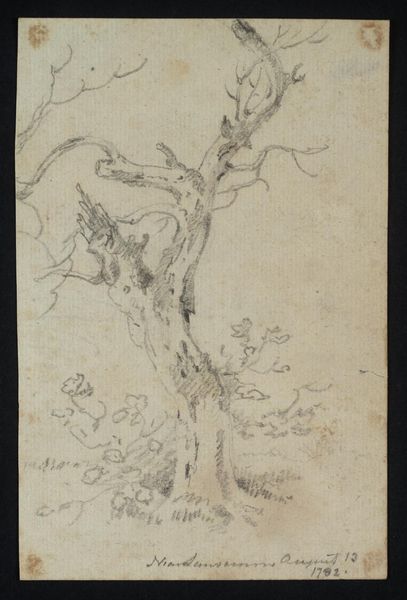
drawing, paper, pencil
#
drawing
#
pencil sketch
#
landscape
#
paper
#
pencil
#
naturalism
#
realism
Dimensions: height 225 mm, width 295 mm
Copyright: Rijks Museum: Open Domain
Editor: We’re looking at Willem Cornelis Rip’s pencil drawing, "Boom," created in 1874. It depicts a section of a tree branch, detailed with a network of smaller twigs and leaves. What strikes me is the seemingly effortless way the artist captures the organic forms. How would you interpret this work? Curator: Observing the line quality, we can appreciate the artist's deft handling of the pencil. Note the varying pressure that creates depth and volume, even in such a seemingly simple sketch. The composition leads the eye along the central branch, then fans outward into the detailed foliage. It's an exploration of form through subtle tonal variations and strategic use of line. What does the overall structure communicate to you? Editor: I see the contrast between the thick main branch and the delicate offshoots. It feels balanced. Does that contrast help to communicate movement, like the tree growing? Curator: Precisely. The movement resides in the tension between stasis and growth. The stable trunk anchors the dynamism of the burgeoning leaves and smaller branches. The artist is showing us a glimpse into natural growth, which becomes the visual anchor. Editor: It’s fascinating how much can be conveyed through something as simple as a pencil sketch. Thank you for sharing your insights. I see so much more now! Curator: My pleasure. Remember that the structural elements are not just descriptive, they are expressive. Focusing on how the visual forms function allows one to decode how the image conveys meaning and evokes the aesthetic appreciation in its pure form.
Comments
No comments
Be the first to comment and join the conversation on the ultimate creative platform.
